What is Art Deco?
Art Deco architecture is a popular style of design characterised by geometric, fashionable or a sleek stylised facade using man-made materials, according to Britannica. Originally from the 1920s, characterised by its antitraditional characteristics, it originally represented modernism symbolising affluence and stature.
When was the Art Deco period?
The style’s characteristics originated in the mid-to-late 1910’s, yet it was first exhibited in Paris, France in 1925, which spawned its major developments and meaning shortly after as a major style in western Europe during the 1930’s. The style derived its name from the Exposition Internationale des Arts Décoratifs et Industriels Modernes.
Who was at its forefront?
Major players in the Art Deco movement included Jacques Ruhlmann and Maurice Dufrène, Eliel Saarinen, Jean Puiforcat, René Lalique, Erté, Raymond Templier, H.G. Murphy, and Wiwen Nilsson and Chiparus. Those whose Art Deco works reached the mainstream included Paul Poiret and Edward McKnight Kauffer.
What are the characteristics of Art Deco?
The Art Deco architecture characteristics of Art Deco are definitively modernity, machinery and relative simplicity, planarity, symmetry and unvaried repetition of elements. When thinking of Art Deco, keywords such as: ‘clean, simple, streamlined’ come to mind. Materiality usually includes plastics, reinforced concrete, vita-glass, combined with natural materials such as silver, ivory, jade and chrome.
Among its array of influences, its most formative were Art Nouveau, the Bauhaus, Cubism and Serge Diaghiley’s Ballets Russes. Practitioners of Art Deco also found inspiration in American Indian, Egyptian and early Classical sources, whilst incorporating nature.
The Chrysler Building, New York, 1930
Located in New York City, close by its peers the Rockefeller Center, the Empire State building and the Times Square Building, it’s the tallest brick building in the world with a steel framework.
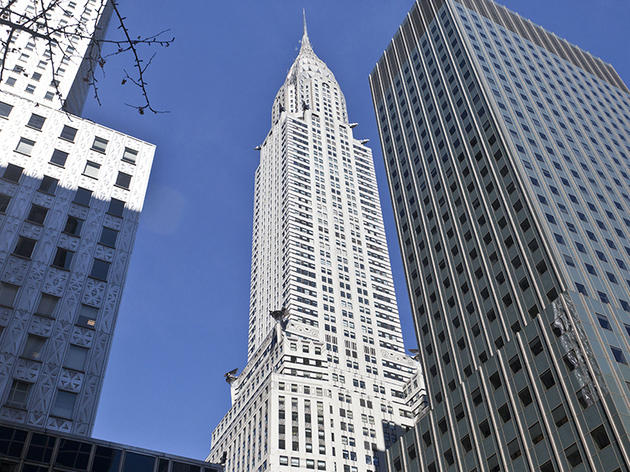
The Empire State Building, New York, 1931
Designed by Shreve, Lamb & Harmon, it features 102 stories, with infamous setbacks, that make the building smaller as it rises into the sky.
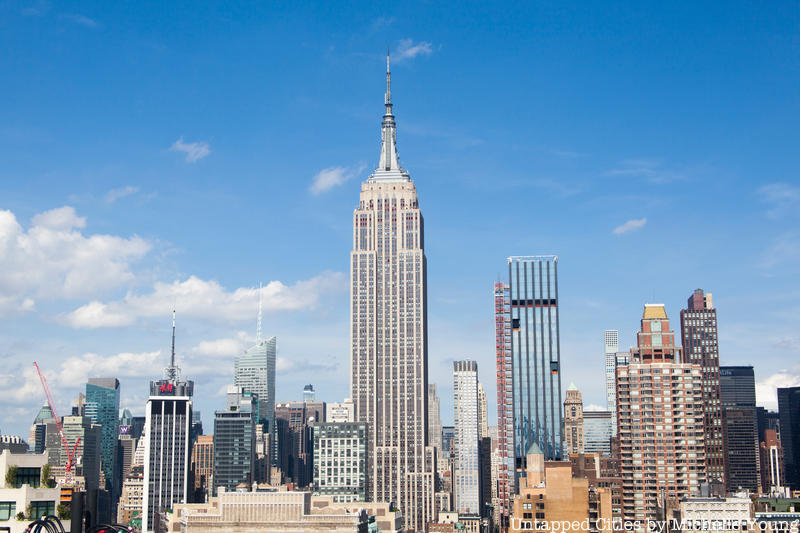
The Rockefeller Center, New York, 1929
Built in 1929 in New York City, the center was commissioned by the Rockefeller family, featuring a strong Art Deco design by Raymond Hood who was a young participant in the Art Deco movement.
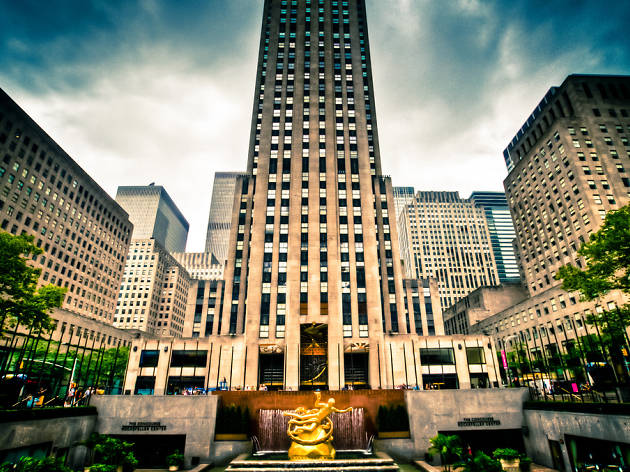
The Times Square Building, New York, 1929
Designed by Ralph Thomas Walker of Voorhees, Gmelin and Walker, which were the same architects that were noted to have designed the Barclary-Vesey Bank, which was the first Art Deco building in New York City.
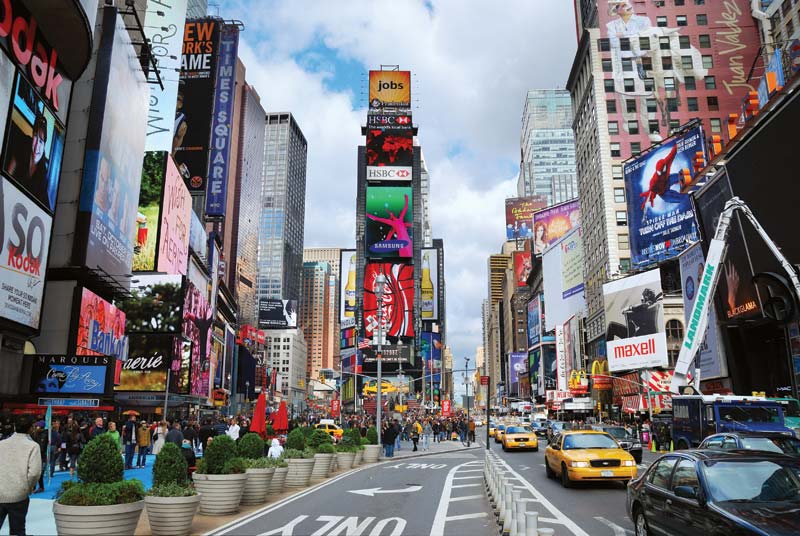
Although most of the aforementioned remarkable Art Deco buildings are located in New York City, Napier, New Zealand is actually the self-proclaimed Art Deco Capital of the world. After the city’s 1931-earthquake, the city rebuilt in the Art Deco trend of its time, with Art Deco buildings, an atypical art deco house and general Art Deco characteristics – it’s dense concentration completely retransformed in an Art Deco fashion, with the addition of Maori motifs.
Arguably, Singapore, Miami, Berlin, Shanghai and Melbourne are added and notable mentions of their widespread Art Deco buildings.
The history of Art Deco’s impact on a multitude of design styles instigated their subsequent evolution, although its initial decline in popularity in the late 1930s to early 1940s. It soon fell out of public favour not long thereafter, although afterwards, its resurgence came about with the advent of graphic design in the 1980s.
Art Deco is still a prominent influence on contemporary design currently, as its influence spanned not exclusively architecture, but all types of arts including crafts and fine arts such as; interior design, furniture, jewellery, textiles, fashion, industrial design and architecture.
According to Las Vegas Review Journal, “Yes, art deco truly is experiencing a resurgence,” or The Washington Post, “What’s driving art deco’s resurgence? It could be today’s political climate.”
“In residential design, the expression of individuality, character and comfort has roared back into style – chaos, movement and colour are celebrated once again,” says Amy Somerville, a luxury furniture-maker.
“Devotees are describing the style as is New Art Deco, saying that it is a redefinition of Art Deco – of its sumptuous audacity for the 21st-century home,” according to How To Spend It.
So what’s instore for the future of Art Deco? “When it comes to patterns, New Deco devotees are less keen on panthers and pyramids and more enamoured of the overscale geometrics of the era.”
Designers spearheading the current Art Deco resurgence include Stephanie Coutas,
Amy Somerville, Michael Bell, Susan Zelouf, Cristina Celstino and Gio Pagani. Pagani’s evocative and expressive designs include floor lights, hand-blown Murano-glass globes on gleaming metal legs, artfully capitalising on a mix-and-match approach.
Art Deco has taken evolution of technology, range of methods and scale into consideration, enabling the designer to create further reaches of what defines and pulls the parameters of Art Deco ‘slightly to the left’.
For example, Stephanie Coutas, who worked in fashion and then switched to interior design, she used rich ornamental in New Art Deco style.
“A table is decorated with a metallic and wool thread inserted in the glass, the metallic/wool-blend rug mimics the pattern of the tabletop, which harmonises with a black and green marble sideboard and leather wall panels, which in turn echo each other’s polygonal pattern.”
10. Majorca Building, Melbourne, 1928
The eight-story tower in Melbourne, is an Art Deco gem in Melbourne, Australia, designed and constructed between 1928-30, it was designed by Harry Norris, one of the most prolific architects in the city during te 1920s and ‘30s.

9. Hoover Building, London, 1933
The Hoover Company, a vacuum cleaner maker opened its headquarters in 1933, now known as The Hoover Building, the Grade II-listed building was designed by Wallis, Gilbert and Partners and is located in Perivale.
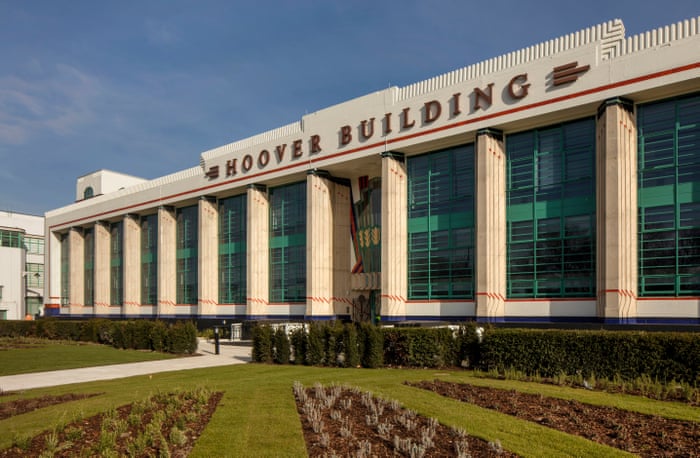
8. Mutual Building, Cape Town, 1940
Built as the headquarters for the South African Mutual Life Assurance Society, the building was opened in 1940 and designed by Fred Glennie of Louw & Louw architecture firm.
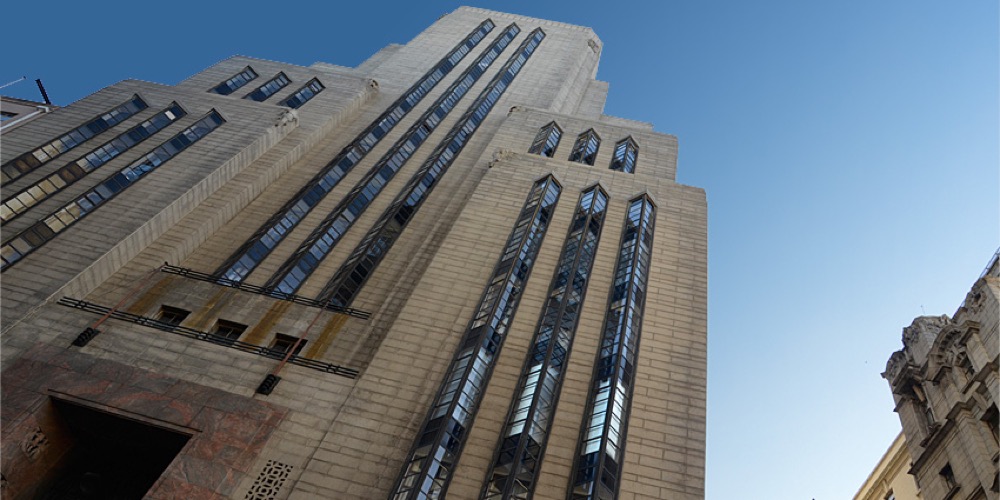
7. Pantages Theatre, Los Angeles, 1930
Formerly known as RKO Pantages Theatre, is located on Hollywood Boulevard and was designed by architect, B. Marcus Priteca. The theatre opened as part of the Pantages Theatre Circuit.
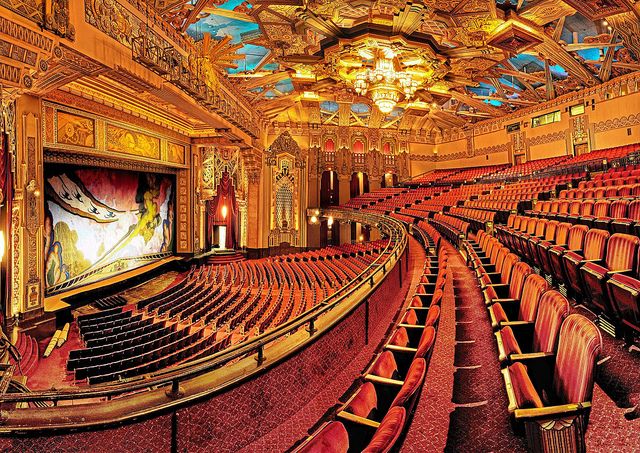
6. Langham Yangtze Boutique, Shanghai, 1933
The early 30’s Art Deco boutique hotel dates back to 1933, was designed by the renowned architect, Li Pan. The hotel went under a $30m renovation in 2009.

5. Chicago Board of Trade Building, Chicago, 1930
The building was designed by William W. Boyington and was first designated a Chicago Landmark in 1977 and is now a primary trading venue.

4. Breakwater South Beach, Miami, 1936
The historic Art Deco boutique hotel had 99 rooms and was designed by a Yugoslavian architect named Anton Skislewicz – the building is still utilised as a boutique hotel.
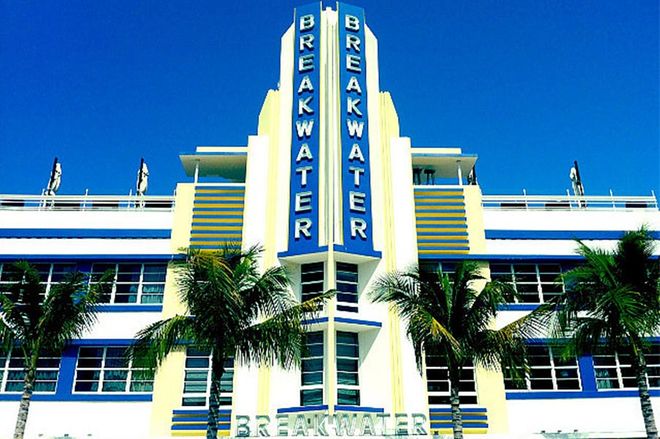
3. Eastern Columbia Building, LA, 1930
The Eastern Columbia Building is a thirteen story building designed by Claud Beelman and is in the Broadway Theater District of Downtown LA. It only took nine months to construct and is used as residential loft apartments as of currently.
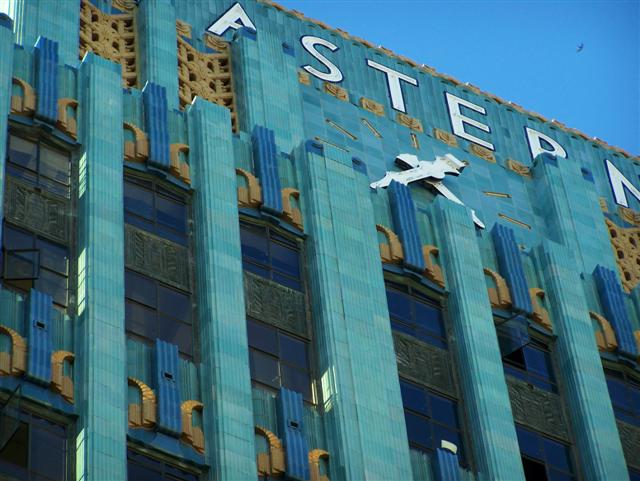
2. Pallais De Chaillot, Paris, 1937
The design by architects Louis-Hippolyte Boileu, Jacques Carlu and Leon Azema classicised “modern” style were the Palais de Chaillot’s updated plans as Paris would host the World’s Fair during the period of 1937. Today, it houses a number of different museums.

- National Basilica of the Sacred Heart, Brussels, 1969
A Roman Catholic Minor Basilica and parish church in Brussels, Belgium. The first stone was laid by King Leopold II in 1905, but its construction was haltered by two World Wars, and only finished in 1969. The architect was Albert Van Huffel whose designed was adopted in 1919.


